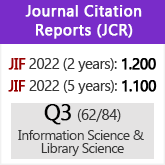A health check for university use of the web in Spain
DOI:
https://doi.org/10.3989/redc.2003.v26.i3.139Keywords:
Spanish universities, crawler, web sites, web presence, quantitative analysis, international impactAbstract
The Web has become an important tool for universities, and one that is employed in a variety of ways. Examples are: disseminating and publicising research findings and activities; publishing teaching and administrative information for students; and collaborating with other institutions nationally and internationally. But how effectively are Spanish universities using the Web and what information can be gained about online communication patterns through the study of Web links? This paper reports on an investigation into 64 university Web sites that were indexed using a specialist information science Web crawler and analysed using associated software. There were a wide variety of sizes for university Web sites and that universities attracted links from others broadly in proportion to their site size. The Spanish academic Web was found to lag behind those of the four countries that it was compared to. However, the most commonly targeted top-level Internet domains were from non-Spanish speaking high Web using countries around the world, showing a broad international perspective and high degree of multilingualism for Web authors. The most highly targeted pages were mainly those that attracted automatically generated links, but several government ministries were a surprise inclusion.
Downloads
Download data is not yet available.
Downloads
Published
2003-09-30
How to Cite
Thelwall, M., & Aguillo, I. F. (2003). A health check for university use of the web in Spain. Revista Española De Documentación Científica, 26(3), 291–305. https://doi.org/10.3989/redc.2003.v26.i3.139
Issue
Section
Studies
License
Copyright (c) 2003 Consejo Superior de Investigaciones Científicas (CSIC)

This work is licensed under a Creative Commons Attribution 4.0 International License.
© CSIC. Manuscripts published in both the printed and online versions of this Journal are the property of Consejo Superior de Investigaciones Científicas, and quoting this source is a requirement for any partial or full reproduction.All contents of this electronic edition, except where otherwise noted, are distributed under a “Creative Commons Attribution 4.0 International” (CC BY 4.0) License. You may read here the basic information and the legal text of the license. The indication of the CC BY 4.0 License must be expressly stated in this way when necessary.
Self-archiving in repositories, personal webpages or similar, of any version other than the published by the Editor, is not allowed.

















